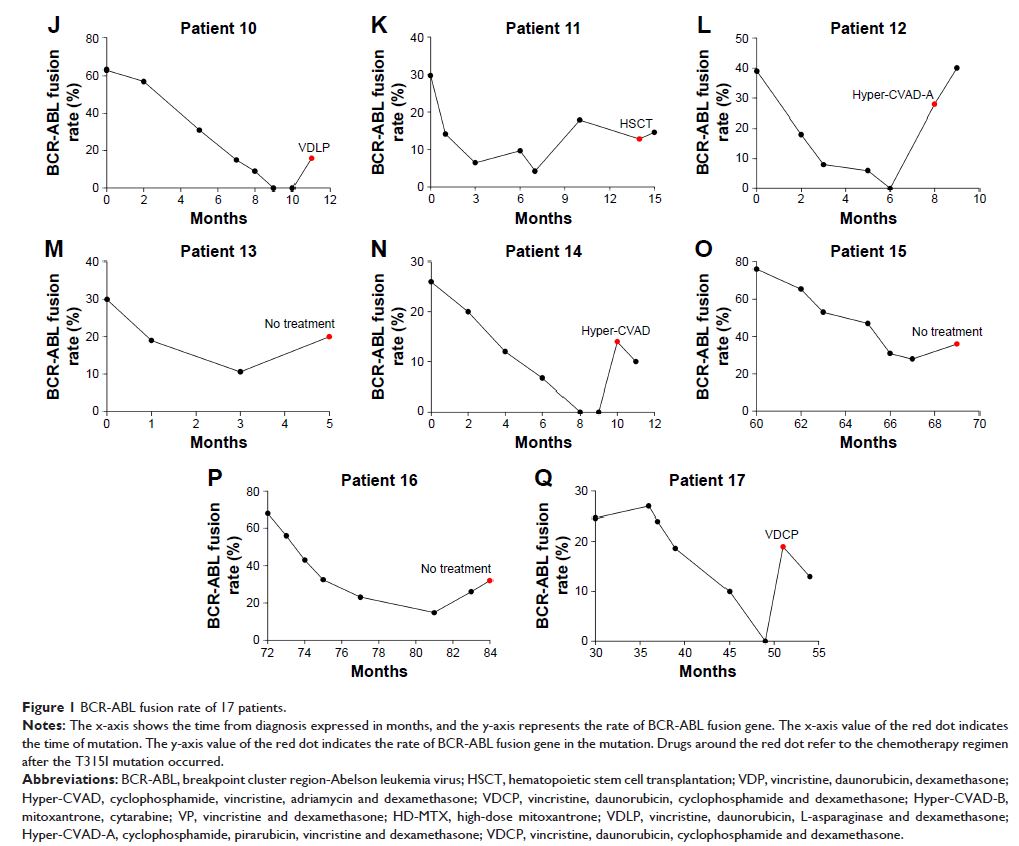108384
论文已发表
注册即可获取德孚的最新动态
IF 收录期刊
- 3.4 Breast Cancer (Dove Med Press)
- 3.2 Clin Epidemiol
- 2.6 Cancer Manag Res
- 2.9 Infect Drug Resist
- 3.7 Clin Interv Aging
- 5.1 Drug Des Dev Ther
- 3.1 Int J Chronic Obstr
- 6.6 Int J Nanomed
- 2.6 Int J Women's Health
- 2.9 Neuropsych Dis Treat
- 2.8 OncoTargets Ther
- 2.0 Patient Prefer Adher
- 2.2 Ther Clin Risk Manag
- 2.5 J Pain Res
- 3.0 Diabet Metab Synd Ob
- 3.2 Psychol Res Behav Ma
- 3.4 Nat Sci Sleep
- 1.8 Pharmgenomics Pers Med
- 2.0 Risk Manag Healthc Policy
- 4.1 J Inflamm Res
- 2.0 Int J Gen Med
- 3.4 J Hepatocell Carcinoma
- 3.0 J Asthma Allergy
- 2.2 Clin Cosmet Investig Dermatol
- 2.4 J Multidiscip Healthc

携带 T315I 突变的 Ph 阳性白血病患者接受酪氨酸激酶抑制剂的特征和突变分析
Authors Xu PP, Guo D, Shao XY, Peng MX, Chen B
Received 24 May 2017
Accepted for publication 16 August 2017
Published 25 September 2017 Volume 2017:10 Pages 4731—4738
DOI https://doi.org/10.2147/OTT.S142482
Checked for plagiarism Yes
Review by Single-blind
Peer reviewers approved by Dr Akshita Wason
Peer reviewer comments 2
Editor who approved publication: Dr Carlos Vigil Gonzales
Background: TKIs are the first-line treatment for patients with Ph-positive (Ph+)
leukemia. However, drug resistance is frequently observed, mainly due to
mutations within the breakpoint cluster region-Abelson leukemia virus (BCR-ABL)
kinase domain. The T315I substitution confers complete resistance to TKIs. The
aim of this study was to analyze the clinical characteristics of 17 patients
with T315I mutation after TKI treatment and provide a basis for prognosis.
Patients and methods: The clinical data of 17 TKI-resistant Ph+ leukemia
patients who were found to have a ABL kinase domain mutation from September
2008 to January 2017 were collected. Karyotypes and BCR-ABL fusion gene were
analyzed by R-banding and fluorescence in situ hybridization, respectively.
Total RNA was extracted by TRIzol reagent, and the ABL kinase domain mutation
was detected by direct sequencing.
Results: A total of 17 patients reached effective remission
including major molecular response and complete cytogenetic response. However,
all the patients subsequently developed a T315I mutation after treatment with
TKIs. The rate of the BCR-ABL fusion gene in most of the patients who developed
the T315I mutation was significantly higher than that before the mutation. At
initial diagnosis, patients average platelet count was 149.7×109/L, whereas the average platelet count was only
53.88×109/L after the T315I mutation (P <0.01). The results also
showed that the survival time of patients with a high proportion of blast cells
or a high number of white blood cells was obviously shortened.
Conclusion: Patients platelet count decreased when detected
with the T315I mutation compared with the initial diagnosis. Combined use of
different TKIs and complex chromosomal karyotypes may promote the development
of the T315I mutation. When the ratio of blast cells was >50% and the number
of white blood cells was >20×109/L, poor survival
prognosis was observed.
Keywords: acute
lymphoblastic leukemia, chronic myeloid leukemia, BCR-ABL positive, T315I
mutation
